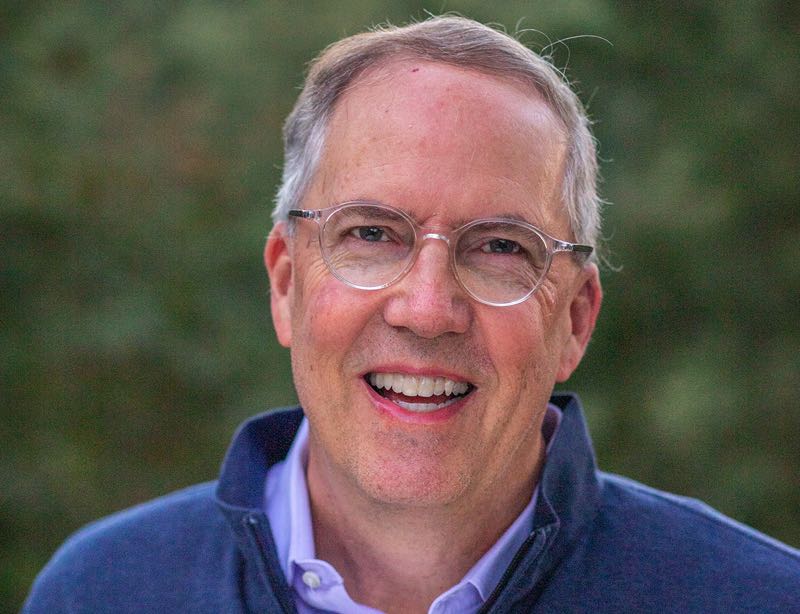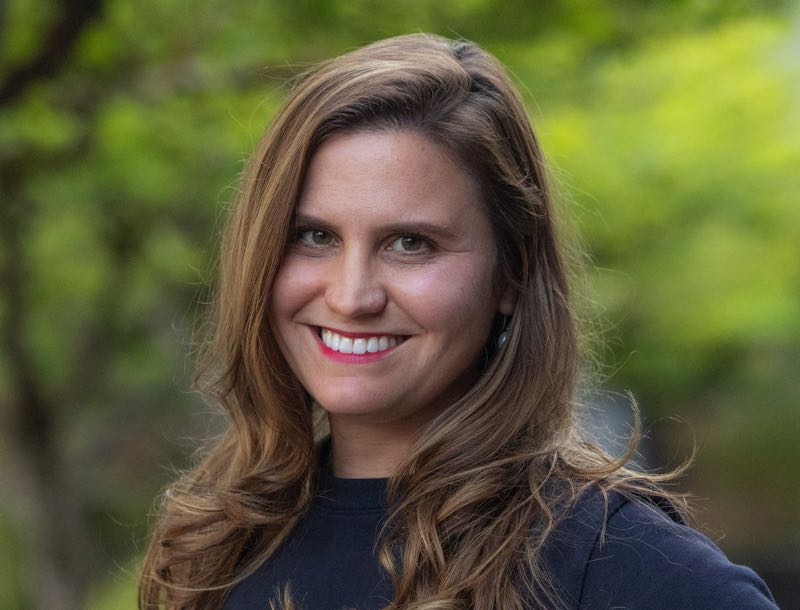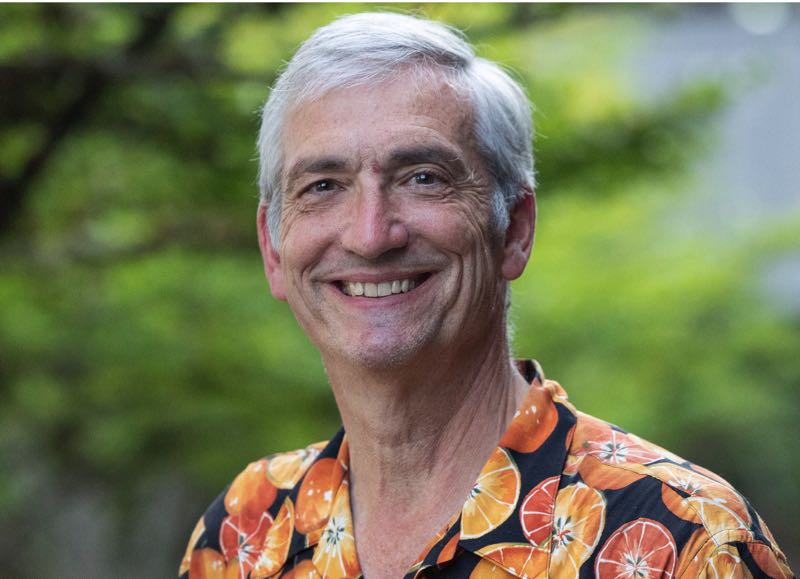Materials management, what does that mean?
 |
|||||||||||
|
 |
|||||||||||
|
 |
||||||||||
|

Candidate Photos courtesy of the Lake Oswego Review & Pamplin Media
Intro: Lake Oswego Sustainability Network reached out to our City Council Candidates and asked them three sustainability-related questions about: 1) their plans for sustainability action, 2) increasing affordable housing, and 3) embedding sustainability considerations into city projects.
What are your plans for sustainable action and what are you going to do to make it happen?
My four-year service on Council has included Sustainability and Climate change in my factors when making the many policy decisions. That hands on approach and philosophy will continue. Coupled with public input, financial stewardship, and collaborative problem solving, Lake Oswego became a leader in the Metro area by making sensible policy that included environmental and economic sustainability thinking. We made sure that our renewal of our garbage and recycling contract, our capital projects like the recent City Hall and the upcoming LO Recreation and Aquatic Center all had a sustainability mindset. The management practices of our parks, and decisions on building codes all have a sustainability philosophy when decisions are made. Council adopted a new sustainability plan and works closely with the Sustainability Advisory Board to continue implementing best practices.
In a broader sense, educating our community on the day-to-day advantages of sustainability and best practices is a key role of City leadership. Besides easy adoptions of electric and hybrid cars, battery operated lawn tools, LED lights, proper insulation, recycling, and solar, there is the protection of natural areas and our watershed. With LOSN and the Watershed Council as wonderful community partners, serious headway to much better practices and action values happen every year.
Lake Oswego is moving forward in authorizing affordable housing on Boones Ferry Road in Lake Oswego. People who make 80% of the area median income would be eligible. For a family of four in 2021 that would be about $74,000 – about what a firefighter or teacher makes. Should Lake Oswego continue to find opportunities for more affordable housing? What are creative ideas you have or policies you might put forward to further help Lake Oswego’s affordable housing stock grow?
We must continue to address middle housing shortages in Lake Oswego. In the last four years we have supported three new middle housing projects – two on Boones Ferry and one at Marylhurst. These are the first projects in over a decade. We made focused use of one-time funding from COVID and ARPA grants which were instrumental in initiating middle housing in Boones Ferry. The service minded Sisters at Marylhurst were able to dedicate resources for their project and we supported and partnered with them by re-districting the area. The new North Anchor project will have some subsidized middle housing units.
Scarcity of land is an unfortunate reality. There are still opportunities at Foothills for middle housing when that area can be developed. Similar to North Anchor, new projects can have a portion of units dedicated to subsidized middle housing in exchange for reduced system development fees. Private industry needs the incentives to develop middle housing and with the Metro housing tax, future funds may become available.
The City is currently in the design process for a new Wastewater Treatment plant and a Recreation Center. In both these cases, many sustainability opportunities were only explored late in the design process and at the request of citizens. What would you do to embed sustainability considerations in City projects from the very beginning including citizen input?
To say that sustainability was not part of the early conversation is disingenuous. In both projects referenced, there was a tremendous amount of citizen input and involvement throughout all the initial stages with many sustainable goals achieved very early in the process. As projects become more finalized in the planning stage, there is always opportunity to review projects through multiple lenses. Sustainability values, impacts and beliefs were appreciated in both of these projects. All recent city projects including City Hall, Adult Community Center, park bathrooms, and LORAC have many sustainable features. In any project, there is always the competing balance of available budgets and features needed and wanted.
In the case of the Sewer Treatment Plant, this is a unique project because it is a Private Public Partnership. The number one objective is to minimize the impact on Sewer rates for our ratepayers while providing a reliable and sustainable environmental and economic plant for the future. Working with a private company that will design, build, and operate this facility is slightly different than a normal city only managed project. In this project, the private party was very receptive to sustainability goals as the design process became more developed.
Note: some readers perceived this question as critical of the City leadership. This was not our intent. We have been pleased with the degree to which the City has collaborated with us on sustainability and made sustainability a focus in their operations. Our goal was to elicit ideas on how collaboration between the city and citizens could be structured. Our apologies for not making our intent clearer.
Ali Afghan
Charles A. Bryan
Trudy Corrigan
Jeff Gudman
Katherine Lupton
John Wendland

Candidate Photos courtesy of the Lake Oswego Review & Pamplin Media
Intro: Lake Oswego Sustainability Network reached out to our City Council Candidates and asked them three sustainability-related questions about: 1) their plans for sustainability action, 2) increasing affordable housing, and 3) embedding sustainability considerations into city projects.
What are your plans for sustainable action and what are you going to do to make it happen?
I am the only Lake Oswego City Council candidate who has been endorsed by the Oregon League of Conservation Voters (OLCV), after an extensive endorsement process.
Here is my plan for sustainable action.
My stance on the tree code:
Lake Oswego is at a crossroads, and as we watch our mature trees being torn down at the hands of developers, it is clear our tree code just isn’t working. How do we fix it? On City Council I will:
We are losing our tree canopy at an alarming rate, even as we watch our once tranquil Oregon summers grow hotter by the year. As a city, we also recognize that the existence of large, mature trees must dictate development, just like any other site condition. We must stand up for what is right.
Lake Oswego is moving forward in authorizing affordable housing on Boones Ferry Road in Lake Oswego. People who make 80% of the area median income would be eligible. For a family of four in 2021 that would be about $74,000 – about what a firefighter or teacher makes. Should Lake Oswego continue to find opportunities for more affordable housing? What are creative ideas you have or policies you might put forward to further help Lake Oswego’s affordable housing stock grow?
Yes, of course Lake Oswego should continue to find opportunities for more affordable housing. Providing affordable housing will help our city to become more diverse and inclusive, something that is absolutely needed in our community. On the Lake Oswego City Council, I will support middle housing and apartment complexes that offer affordable housing opportunities. We must, of course, protect our tree canopy throughout this process, which should be easily achieved as the Development Code is revised to include the Tree Code.
The City is currently in the design process for a new Wastewater Treatment plant and a Recreation Center. In both these cases, many sustainability opportunities were only explored late in the design process and at the request of citizens. What would you do to embed sustainability considerations in City projects from the very beginning including citizen input?
I have also had frustrating experiences in which I felt that I was not heard or acknowledged after testifying in front of and writing to the City Council. This happened while I was advocating for safe sidewalks and pathways in my neighborhood. I understand how this feels, and as a City Councilor I will work to create transparency and involve citizens in the planning process. I think we can start by acknowledging public testimony with discussion and comment at the meetings that are held at City Hall, and by ensuring that City Council meetings are accessible and welcoming.
I am the only City Council candidate in the current race that has been endorsed by the Oregon League of Conservation Voters. I am clearly a candidate that will do everything in her power to embed sustainability considerations in City projects from the very beginning.
Note: some readers perceived this question as critical of the City leadership. This was not our intent. We have been pleased with the degree to which the City has collaborated with us on sustainability and made sustainability a focus in their operations. Our goal was to elicit ideas on how collaboration between the city and citizens could be structured. Our apologies for not making our intent clearer.
Ali Afghan
Charles A. Bryan
Trudy Corrigan
Jeff Gudman
Katherine Lupton
John Wendland

Candidate Photos courtesy of the Lake Oswego Review & Pamplin Media
Intro: Lake Oswego Sustainability Network reached out to our City Council Candidates and asked them three sustainability-related questions about: 1) their plans for sustainability action, 2) increasing affordable housing, and 3) embedding sustainability considerations into city projects.
What are your plans for sustainable action and what are you going to do to make it happen?
Purchase of land/conservation easements in Stafford, review of the development code, planting more trees on city property, support continuing education of the residents.
Lake Oswego is moving forward in authorizing affordable housing on Boones Ferry Road in Lake Oswego. People who make 80% of the area median income would be eligible. For a family of four in 2021 that would be about $74,000 – about what a firefighter or teacher makes. Should Lake Oswego continue to find opportunities for more affordable housing? What are creative ideas you have or policies you might put forward to further help Lake Oswego’s affordable housing stock grow?
There are no new creative ideas on affordable housing. All have been discussed. The issue is not one of ideas, but one of execution like what is being done on Boones Ferry.
The City is currently in the design process for a new Wastewater Treatment plant and a Recreation Center. In both these cases, many sustainability opportunities were only explored late in the design process and at the request of citizens. What would you do to embed sustainability considerations in City projects from the very beginning including citizen input?
Provide leadership on the part of the council. If the opportunities were not there are the start, that is on council.
Note: some readers perceived this question as critical of the City leadership. This was not our intent. We have been pleased with the degree to which the City has collaborated with us on sustainability and made sustainability a focus in their operations. Our goal was to elicit ideas on how collaboration between the city and citizens could be structured. Our apologies for not making our intent clearer.
Ali Afghan
Charles A. Bryan
Trudy Corrigan
Jeff Gudman
Katherine Lupton
John Wendland

Candidate Photos courtesy of the Lake Oswego Review & Pamplin Media
Intro: Lake Oswego Sustainability Network reached out to our City Council Candidates and asked them three sustainability-related questions about: 1) their plans for sustainability action, 2) increasing affordable housing, and 3) embedding sustainability considerations into city projects.
What are your plans for sustainable action and what are you going to do to make it happen?
Lake Oswego has a Climate Action Plan, but it contains no quantitative actionable goals for Green House Gas (GHG) reduction. I would ask City Council to determine what out our GHG baseline right now is, and then set GHG reduction goals for 2030 and 2050 in the same way other Clackamas County and Oregon cities have done. (Milwaukie has done a lot of work on this and has GHG reduction of 35% by 2030 and 100% by 2050.) Lake Oswego needs to commit to actionable goals and then take action through 1) Electrifying and 2) Pursuing Green Infrastructure. We need to generate real palpable excitement in our community for a better future! Have you ever driven a zippy electric car that you pay almost nothing to maintain, and costs only $50 a month to fuel with 100% renewable energy from PGE? I have – my family has two! How about the abundance of comfort and energy an effective solar energy system can provide? No more freezing in the winter or baking in a hot house in the summer to avoid using fossil fuel energy which is expensive and hurts the environment. We just need to change how we do things and do them in a better way. And if you can’t put solar on your house — community solar is another great option! We should help people build to green standards. Lake Oswego loves trees, and we need to continue to protect and care for our Urban Forest. The most recent Lidar survey (2019) showed almost 50% canopy coverage, but unfortunately it measured down to the 10-foot level, which can make a hedge look like tree coverage. The city’s consulting engineer is in the process of moving the measurable level on the Lidar survey up to 20 feet, which helps us continue to study and care for our Urban Forest. We need to help people understand that the financial cost of any particular action is not the same as its environmental cost. There are so many things we can do – we need to spread the word about doing things in a better way.
Lake Oswego is moving forward in authorizing affordable housing on Boones Ferry Road in Lake Oswego. People who make 80% of the area median income would be eligible. For a family of four in 2021 that would be about $74,000 – about what a firefighter or teacher makes. Should Lake Oswego continue to find opportunities for more affordable housing? What are creative ideas you have or policies you might put forward to further help Lake Oswego’s affordable housing stock grow?
Lake Oswego must continue to look for opportunities for affordable housing. On the west end of Lake Oswego we are in the process of collaborating with Metro to turn the site acquired for staging the Boones Ferry Road Improvements into multi-Family affordable housing. Meanwhile, across Boones Ferry Road there are plans for another affordable housing project that will be in collaboration with Habitat for Humanity. Seeking partnerships is critical in finding innovative ways to meet our ongoing need for affordable housing. Looking at Clackamas County statistics it seems clear the most effective way to put in affordable housing stock is in multi-Family units. Also, we are now in the process of complying with HB 2001 (Middle Housing), a new state law that was intended to address the housing shortage in our state by allowing more than one unit on a lot zoned for one house. We need to find ways to make that legislation work in the best possible way by implementing it to address residents’ concerns about noise, lack of parking, traffic congestion and loss of trees as the law works to enable those extra units. Ideally, multi-Family will be located close to major transportation thoroughfares.
I’m also aware that pre-existing older homes in Lake Oswego generally sell at more affordable prices than new homes and are much easier on the trees. That means another approach to affordability is to incentivize developers to update and retain older homes where feasible. That approach lends itself not only to sustainability but to retaining the distinctive characters of our 24 neighborhoods as well as our city.
The City is currently in the design process for a new Wastewater Treatment plant and a Recreation Center. In both these cases, many sustainability opportunities were only explored late in the design process and at the request of citizens. What would you do to embed sustainability considerations in City projects from the very beginning including citizen input?
It would be great if we could have a sustainability impact review including an outreach to interested citizens at the beginning of the planning process for city projects. The review would identify the long-term circular economy opportunities up front. For instance, wastewater treatment plants can be incredibly energy intensive. We now know it is possible to get more than just clean water from sewage treatment. We can actually generate energy during the process along with valuable by-products like nutrients that can be re-used. The economic cost of the sewage treatment plant can then be offset by the value of the energy and the nutrients generated. It’s full circle thinking.
Note: some readers perceived this question as critical of the City leadership. This was not our intent. We have been pleased with the degree to which the City has collaborated with us on sustainability and made sustainability a focus in their operations. Our goal was to elicit ideas on how collaboration between the city and citizens could be structured. Our apologies for not making our intent clearer.
Ali Afghan
Charles A. Bryan
Trudy Corrigan
Jeff Gudman
Katherine Lupton
John Wendland